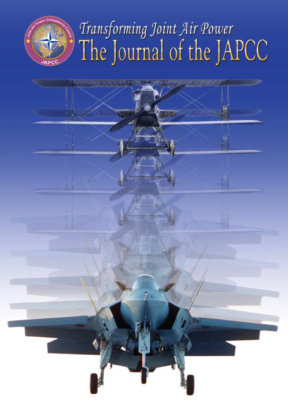Editorial
Welcome to the first edition of the Journal of the JAPCC, the Joint Air Power Competence Centre’s bi-annual publication. You will find a full explanation of the JAPCC’s genesis and its aims and objectives later in the journal but, in essence, the Director’s vision is to enable NATO’s effective and efficient use of Joint Air and Space Power. It is our intention that the journal will become the JAPCC’s public debating chamber for air power issues. We hope that through exposing a cross-section of ideas and opinions we will spark a debate that ultimately will help to shape the future of air power, to maintain and enhance its relevance, and to ensure that there is as much coherence as possible in air power issues from inception to employment.
In the first article, the Director of the JAPCC, General Foglesong, looks back at some of the lessons of the past and then looks forward to the evolution of air power in the future. In the second article, the Executive Director, Lieutenant General Schubert, examines NATO’s Air Command and Control and gives his vision of Air C2 in the era of Network Enabled Capability. I am also delighted to be able to offer contributions from two European Air Chiefs. First, Lieutenant General Klaus-Peter Stieglitz reviews the on-going transformation of the Luftwaffe. In the second article, General Tricarico analyses the challenges facing the air community in the new world order and details how the Italian Air Force is evolving to meet these challenges.
In an article provided by the Southern Region, Combined Air Operations Centre 7 staff review the complex operation which provided air security to the Olympic Games in 2004. The last 2 articles are generated from within the JAPCC. In the first, Col (Dr) Osinga has written a thought-provoking article which assesses the future value of air power. I have also included a review of a proposal which the JAPCC inherited from the Reaction Forces Air Staff, namely the Deployable Airfield Activation Wing (DAAW) concept. This innovative paper seeks to formalise the advance support required to activate a deployed operating base in support of, for example, a NATO Reaction Force deployment. Although the conclusions are hardly a surprise, the idea of a standing force is new, but of course comes with a price tag. Finally, in the first of our regular “Out of the Box” section, Colonel Hans-Jürgen Wolf has a lighthearted look at the future.
I hope you enjoy this first issue. I hope, too, that you will feel inspired either to respond to the articles, or even to feel the need to write one! Our next edition will be published on 1 November as a precursor to our annual conference which will be held on 29/30 November in Kleve, Germany.
Martin W. Halsall
Air Commodore, UK AF
Assistant Director Transformation, JAPCC









